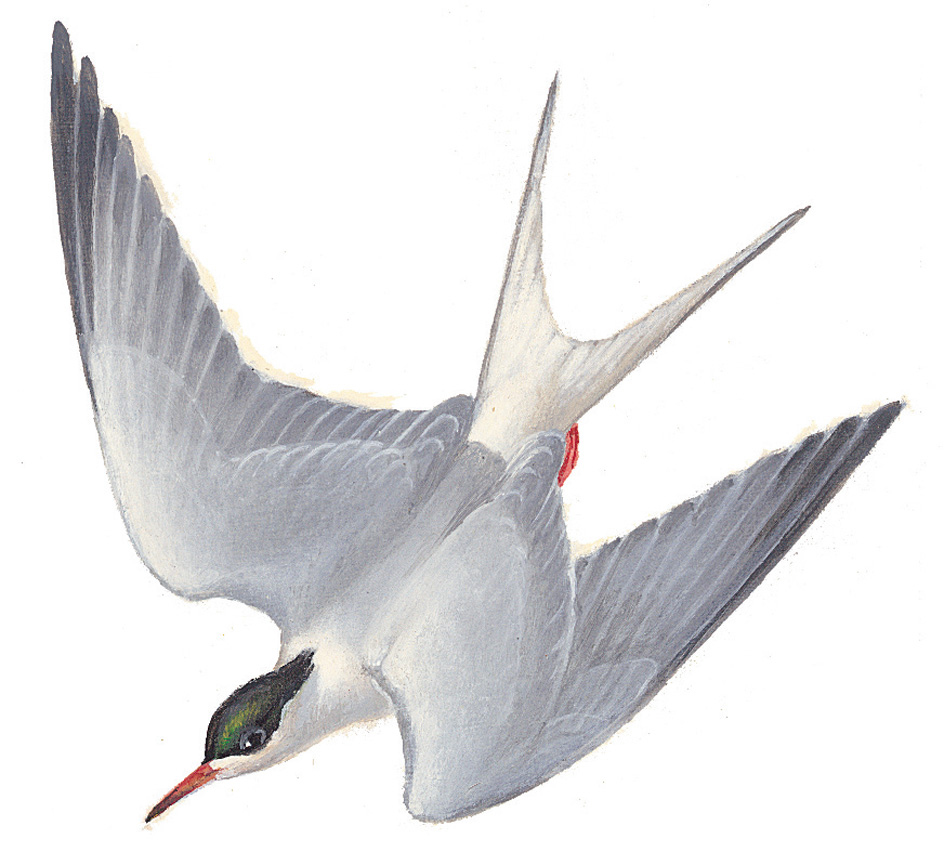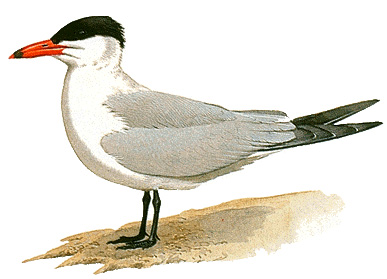Tern is a subfamily of sea birds related to gulls. Terns are famous for their powers of flight. About 35 or more kinds of terns are found in different parts of the world. Fourteen kinds are native to North America. Most of them live along seacoasts, rivers, and lakes, rather than in the open sea. The sooty tern and some others often range far from land.

Common tern
Terns have long, pointed bills and webbed feet. Their pointed wings can carry them through the air swiftly and for long distances. Their swift, graceful flight has given them the name sea swallow. Terns feed mainly on small fish. They seize the fish by darting quickly into the water from the air, with the bill pointing down.
Great colonies of terns inhabit islands during the nesting season. Usually, the nests are slightly hollowed-out places in the ground. Sometimes, the terns lay eggs on bare rock or sand. Some make nests of seaweed. The fairy tern lays its single egg on a hollow place on a small branch, or on a rock ledge with no nest. The parents incubate the egg by sitting on it until it hatches.

Caspian tern
One of the largest kinds is the Caspian tern, a handsome bird 21 inches (53 centimeters) long. It has a shining black crest, and pearl-gray back and wings. The smallest is the least tern, 9 inches (23 centimeters) long. Large numbers of the beautiful common tern live on the Atlantic Coast of North America. Once hunters almost killed off this species in seeking its eggs and plumes. All types of terns are now protected by law. The common tern has light, pearl-gray feathers and a white tail and throat. It is about 15 inches (38 centimeters) long. The common tern lays three or four eggs, which vary in color from whitish to brownish and are thickly spotted with brown and lavender. A tern usually seen on inland marshes and lakes is the black tern. Other types include gull-billed, royal, and Arctic terns. The Arctic tern flies farther in its migration than any other bird known. Some Arctic terns travel 22,000 miles (35,400 kilometers) in a year, from the Arctic Circle to the Antarctic Circle and back.
See also Bird (Birds of the Arctic); Bird (Bird migration).
